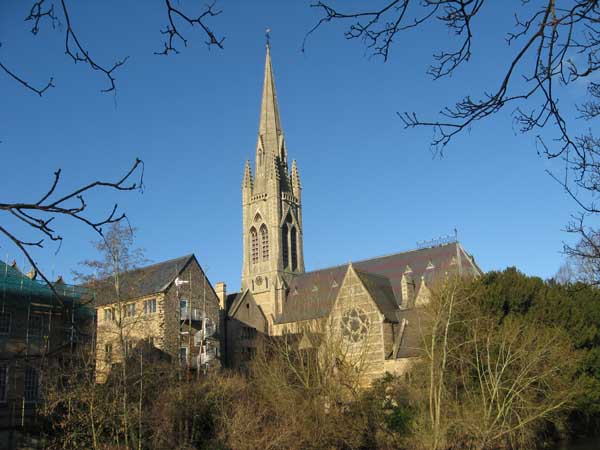|
|
|
|
The Church of St John the Evangelist, Bath, is a Roman Catholic affair constructed between October 1861 and October 1863. It claims to be both the best work of its architect (according to the architect, whose opinion must count considerably on the subject) and also the tallest church tower and spire in Bath (202 feet, 67.33 yards, 12.2 rods, 3ish chains or 61.6 metres). It was also rebuilt somewhat after the Luftwaffe decided to try bombing Bath, home of many interesting industries like bathing and novel-writing. Bath (Aquae Sulis) emerged after someone discovered it was home to hot springs and that hot springs are good for the health. The original Baths were built around 70AD. Construction of new Baths is still an occasional habit, sited in various original places (like rooftops) around the surviving original baths. (One is not usually inclined to think of the Anglo-Saxons as being all that great on the listed buildings front, but the Tourist Board still proclaim the 70AD Baths to be "one of the best preserved Roman remains in the world". So don't bother going to see the Collosseum this year.) The novel-writing side comes from the Georgian love of Bath, which saw the parents of novelist Jane Austen move here - bringing the 26-year-old with them - when her father retired from being Rector of Steventon in 1801. By all accounts she never really loved the place - then fairly recently rediscovered and in high fashion - preferring the country and its opportunities for the harmless interest and intrigue that so colours her books. Nonetheless, Bath has adopted her and neither Steventon nor Alton (where she and her mother moved after her father's death) are really of the international status to lay claim to her legacy. She also made the mistake, from the point of view of disassociating herself with the place, of setting the latter part of Persuasion amongst its old yellow stones. She died in Winchester in July 1817 - a place which could certainly give due prominence to one of the language's leading writers of prose, but where she only spent her last two months. Nowadays Bath is a well-to-do place, situated between the Cotswolds, Gloucestershire and Somerset, next door to Bristol and well away from any motorways. Bath and Bristol, while separated by several miles of Green Belt, form a pleasing, if very different, twin city linked by the Great Western Railway, the Avon and the A4. The railway station, the second-busiest in the South-West of England, is a snug affair in the south-eastern corner of the city centre. Being situated on the Bristol to London mainline, it offers a frequent service of long-distance trains to London and around the regions. Commuting time to the capital (well, Paddington station) is 90 minutes, with the result that property sections of newspapers occasionally like to market the place as an attractive and rural alternative to Gravesend, Margate or indeed Winchester. |
